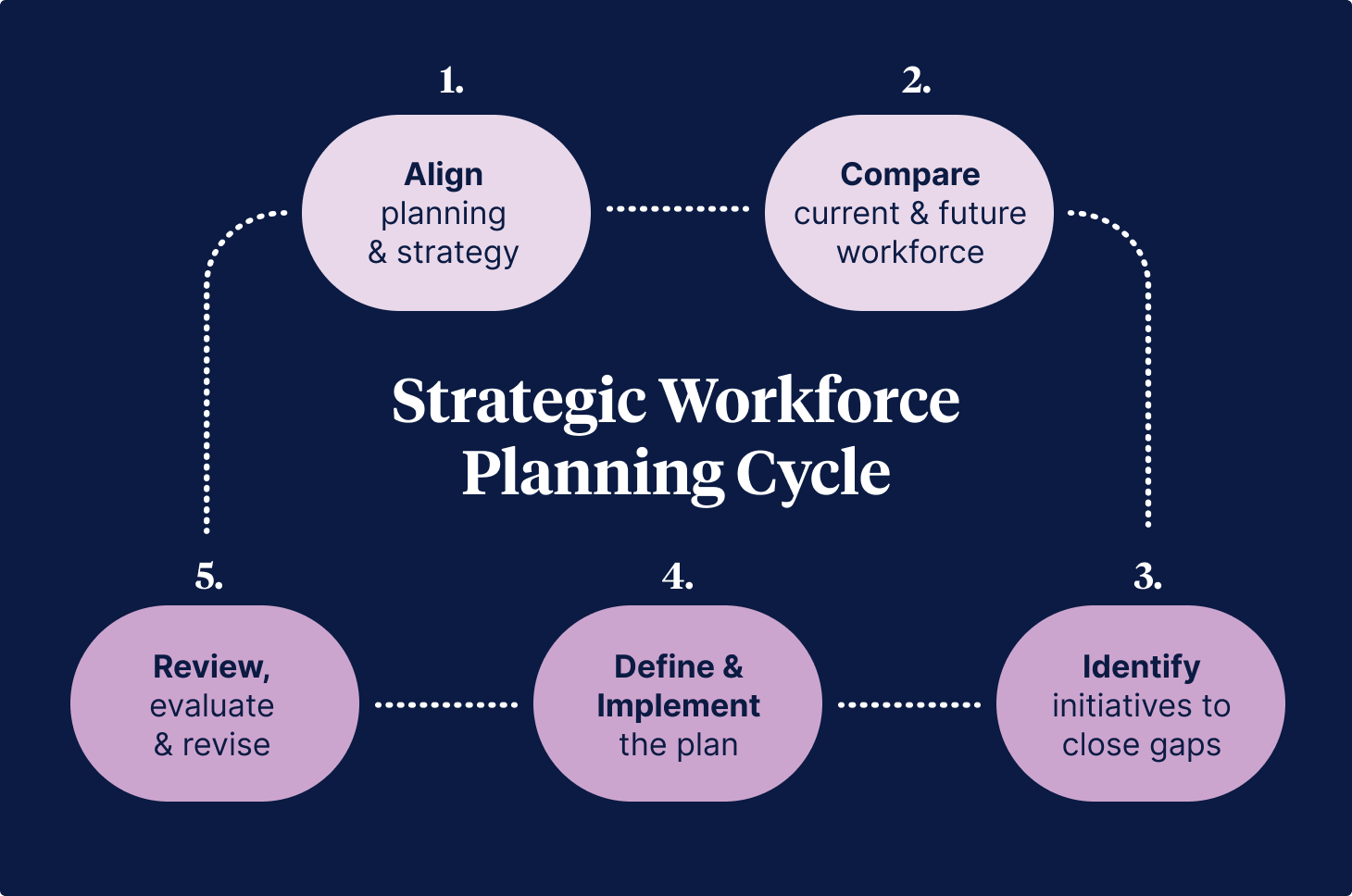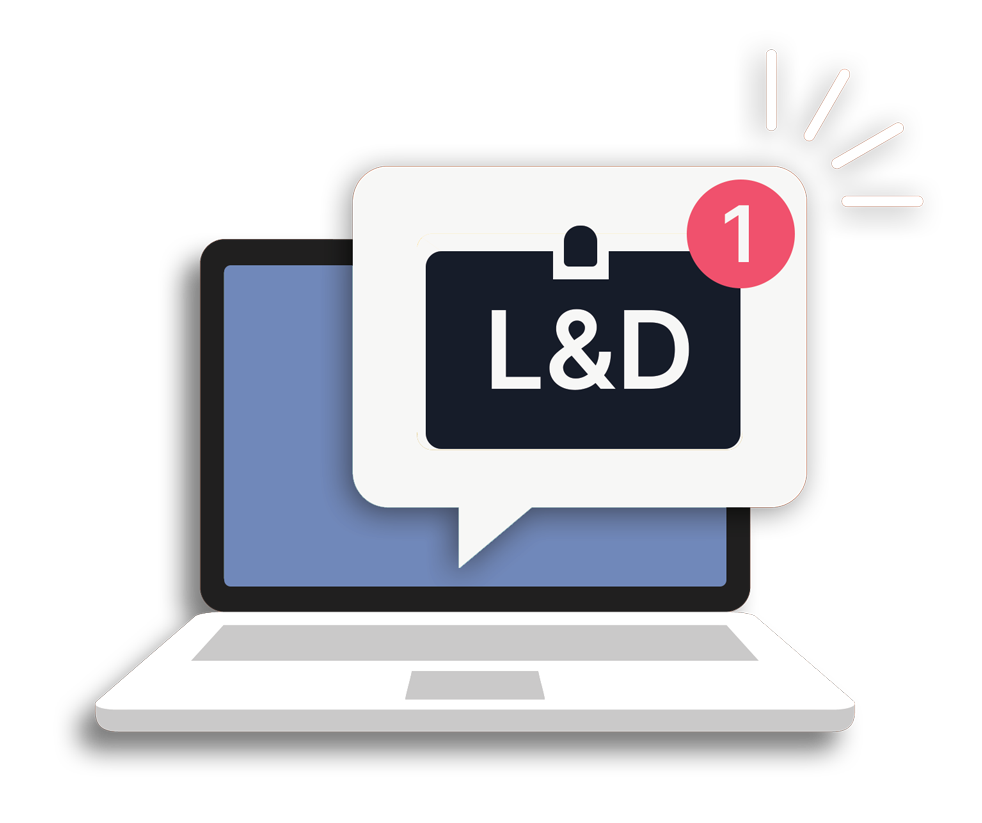What is Workforce Strategy?
Workforce strategy refers to a comprehensive plan or framework designed to ensure the right people are in the right roles at the right time to meet an organisation's long-term goals. It encompasses forecasting workforce needs and creating action plans, such as hiring, succession, and learning and development (L&D) plans, to ensure sustainability and adaptability.
This guide provides practical, actionable steps for novice leaders, HR professionals, and workforce planners to create and implement effective workforce strategies tailored to their organisational needs. It is also valuable for staff to gain insight into this critical aspect of their organisation.
Why is Workforce Strategy Important?
A well-supported, trained and suitably qualified workforce is essential for providing safe, high-quality care and meeting the diverse needs of those we serve. Workforce strategy ensures organisations can respond to growth, navigate regulatory changes, and mitigate risks by proactively addressing workforce gaps and challenges.
This human-centred focus makes strategic workforce planning critical in addressing workforce shortages, supporting staff satisfaction and retention, and ensuring that healthcare systems remain sustainable and effective.
Key Elements of a Workforce Strategy
Creating a workforce strategy is a collaborative process involving parts within the organisation and supported (or sponsored) by senior leadership. With a focus on talent management, diversity, and adaptability to change, it provides forecasts and action plans to meet future workforce requirements while avoiding overly detailed or short-term operational concerns. It must be based on data and evidence to be accurate and appropriate for each organisation.
Key aspects of a workforce strategy include:
1. Alignment with Organisational Objectives
Workforce strategy must reflect an organisation’s mission, vision, and strategic goals. Consider factors like:
- Growth targets
- Current executive priorities
- The risk appetite of the organisation
- Regulatory and economic environments
- Competitor landscape
2. Long-Term Workforce Planning
Workforce planning focuses on medium to long-term forecasting, typically over 3–5 years. It assumes that change is inevitable and offers direction without becoming mired in operational details.
3. Talent Management
An effective workforce strategy integrates talent management to maximise potential and retain valuable staff. Talent management is the strategic process of identifying, developing, and retaining individuals to meet an organisation’s current and future needs.
It focuses on aligning people’s skills with the right roles while fostering engagement, growth, and long-term commitment. For example:
- Identifying and segmenting talent
- Growing the skills base
- Retaining and mobilising talent
Strategic Workforce Planning Cycle
Strategic workforce planning offers a clear process or framework for setting a workforce strategy. The workforce planning cycle provides a structured, iterative approach to developing, implementing, and reviewing a strategy.
Each organisation will operate at its own stage, but this cycle offers a pathway to align workforce planning with strategic goals.

1. Align
Alignment is about connecting workforce plans with long-term organisational goals. Begin by understanding your organisation’s strategic objectives and challenges.
Key steps include:
- Secure leadership commitment to workforce themes aligned with strategic plans.
- Segment your workforce based on current and future needs.
- Establish clear timelines and ensure workforce diversity is addressed.
2. Compare
Comparing the current and future workforce helps identify gaps and areas for improvement. Start by assessing how your current workforce meets your strategic goals.
- Conduct scenario planning to explore factors like demographic shifts and emerging technologies.
- Use tools like DEGEST analysis (Demographic, Economic, Government and Policy, Environmental, Social and Cultural, Technology) to forecast workforce impacts.
- Identify potential shortages, surpluses, and risks through a gap analysis.
- External labour trends are essential; consider the supply and demand dynamics affecting your workforce needs.
3. Identify
Bridging the gap between your current and future workforce requires creativity and focus. Develop initiatives that address workforce capability gaps while balancing in-house development and external recruitment.
- Brainstorm initiatives to close workforce gaps.
- Promote diversity and target underrepresented groups where applicable in hiring plans.
- Balance the use of contingent labour with long-term strategic hires.
What is Contingent Labour?
Contingent labour refers to workers hired on a temporary, flexible, or non-permanent basis to meet specific organisational needs. This can include contractors, freelancers, consultants, temporary agency workers, or employees hired for short-term projects.
Over-reliance on contingent labour can lead to increased costs and knowledge loss.
4. Implement
Implementation turns planning into action. A good plan is SMART - Specific, Measurable, Achievable, Relevant, and Timely.
Consider the following when implementing a workforce strategy:
- Cross-departmental collaboration to secure executive backing.
- Assign clear responsibilities and develop a governance framework for accountability.
- Use of a tool such as a responsibility matrix to clarify roles during implementation.
5. Review
Strategic workforce planning must evolve. Organisations that continue to align workforce capabilities with strategic goals can reduce costs and improve outcomes.
Regular reviews ensure your strategy remains aligned with internal and external changes.
- Monitor the success of workforce initiatives and adjust as needed.
- Use KPIs and feedback from stakeholders to evaluate outcomes.
- Share insights and updates with leadership to maintain momentum.
Challenges of Workforce Planning
Workforce planning and creating a workforce strategy are not without obstacles, but with the right approach, they can be overcome.
The biggest barrier preventing good workforce planning is a lack of sufficient or reliable workforce data. Other challenges include:
- Doing too much at once.
- Senior leadership not valuing or supporting workforce planning.
- Siloed HR and business units.
- Not using talent management effectively.
- Not knowing the workforce skill needs.
- Getting bogged down with details.
- Focusing too much on headcount, FTE and budgeting.
- Not reviewing and changing the document and it becomes stale.
Benefits of Workforce Planning
Conversely, doing workforce planning well offers several benefits.
For example, aligning workforce capabilities with strategic goals increases an organisation's likelihood of reaching its goals, and employees feel secure in well-planned organisations.
Additional benefits include:
- Mitigate risk from future capability gaps and critical hard-to-fill roles.
- Prepares pipeline of future capabilities. Facilitates transitions to new services, models of care or systems.
- More cost-effective use of resources.
Practical Tips for Implementation
Implementation is where strategy meets reality, requiring a focused and collaborative effort.
Key tips for successful implementation include:
- Cross-department collaboration.
- Clear workforce data, used wisely to make informed decisions.
- Educated leaders who appreciate the benefits of workforce planning and dedicate ample time to it.
- An adaptable plan that can move and flex.
Building Workforce Capability
Watch this video on creating a Capability-Based L&D Strategy based on an organisation's overall strategy, registration or accreditation standards and sector-shared professional capabilities.
Zoe Youl acknowledges compliance is critical but not the end goal for organisations. Rather, building a competent, skilled, and capable workforce is the desired outcome, particularly if an organisation wants to grow and scale.
Conclusion
At its core, healthcare is about people—both the individuals in our community who receive care and the workforce that provides it. There is no healthcare system without the people who work in it. By following a structured approach, organisations can build the workforce's skills, improve staff satisfaction and retention, and improve the care and services they provide.
References and Useful Resources
- Strategic workforce planning framework - NSW Public Service Commission
- National Nursing Workforce Strategy - Health Workforce Taskforce
Author
Zoe Youl
Zoe Youl is a Critical Care Registered Nurse with over ten years of experience at Ausmed, currently as Head of Community. With expertise in critical care nursing, clinical governance, education and nursing professional development, she has built an in-depth understanding of the educational and regulatory needs of the Australian healthcare sector.
As the Accredited Provider Program Director (AP-PD) of the Ausmed Education Learning Centre, she maintains and applies accreditation frameworks in software and education. In 2024, Zoe lead the Ausmed Education Learning Centre to achieve Accreditation with Distinction for the fourth consecutive cycle with the American Nurses Credentialing Center’s (ANCC) Commission on Accreditation. The AELC is the only Australian provider of nursing continuing professional development to receive this prestigious recognition.
Zoe holds a Master's in Nursing Management and Leadership, and her professional interests focus on evaluating the translation of continuing professional development into practice to improve learner and healthcare consumer outcomes. From 2019-2022, Zoe provided an international perspective to the workgroup established to publish the fourth edition of Nursing Professional Development Scope & Standards of Practice. Zoe was invited to be a peer reviewer for the 6th edition of the Core Curriculum for Nursing Professional Development.



